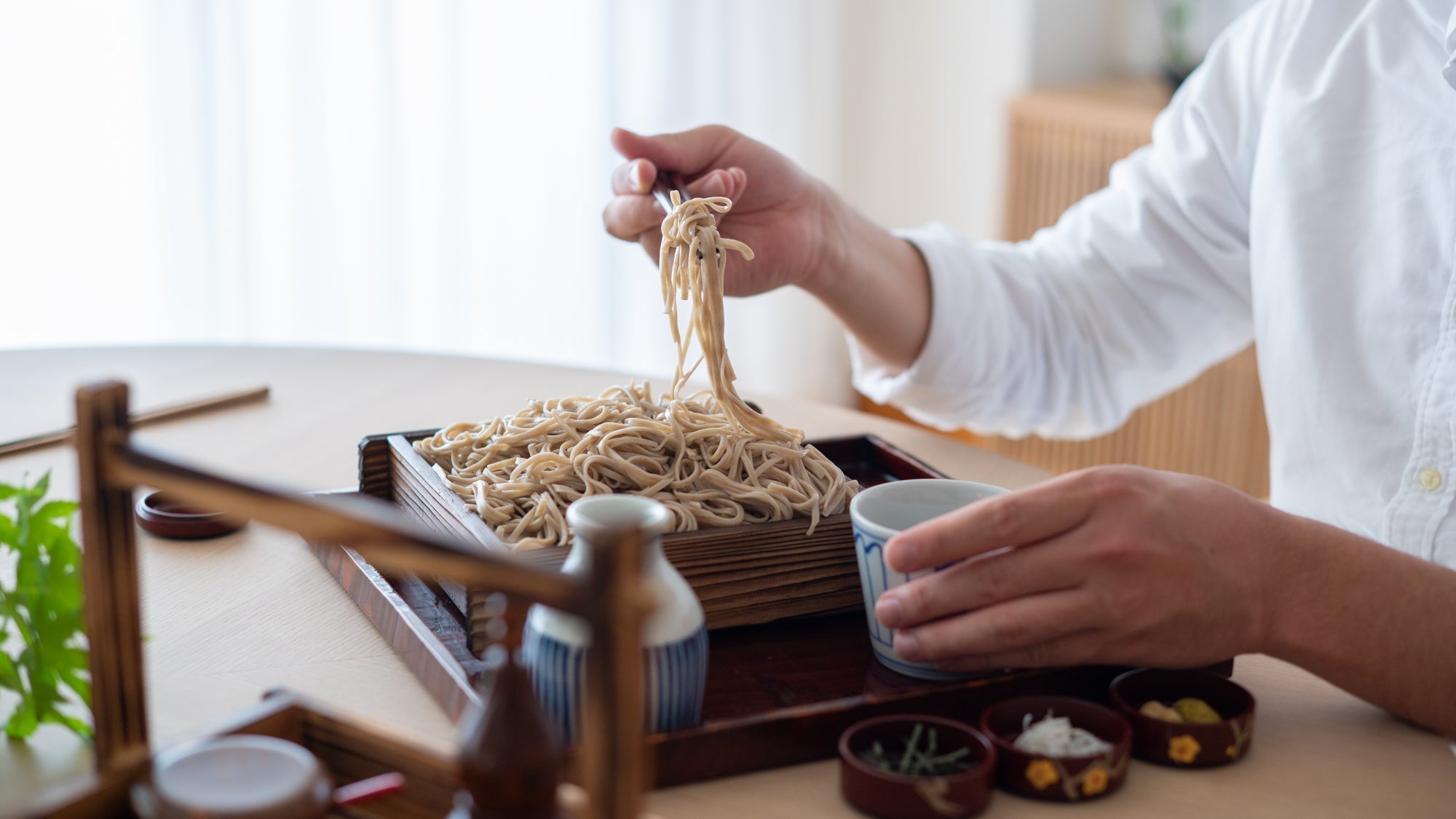
My Secret to Cooking Delicious Soba at Home
Written by Fusada Mototsugu
As spring arrives and temperatures begin to rise in Tokyo, I often find myself craving the cool and refreshing taste of chilled soba noodles. Living in Japan allows me to enjoy these delicious noodles with ease; however, during my previous stays abroad, satisfying this craving was not an easy task.
While ramen and udon establishments were abundant, locating a soba restaurant in a foreign country proved to be quite challenging. Consequently, I resorted to boiling dried soba noodles at home to satiate my craving. But despite my best efforts, my home-cooked soba never quite captured the exquisite flavors and aroma that I had grown to love at authentic soba restaurants in Japan.
Thus, to satisfy my insatiable craving for delicious soba, I began my journey of research and experimentation in finding the tastiest way to prepare dried soba at home.
Follow along as I'll show you step by step, my tried-and-true method on how to cook delectable dried soba with some extra tips that will give added flavor and aroma to your home-cooked soba.
tables of contents
About Dried Soba Noodles

Preparation is Key
First, prepare the condiments that accompany the soba. This includes wasabi, ginger, green onions, and grated daikon radish. Grate the ginger, thinly slice the white part of the green onions, and grate the bottom section of the daikon (it's spicier). Set all the condiments in a small container or plate.



Next, set the soba dipping sauce and chopsticks on the table with the condiments.
On a side note, lately, whenever I eat noodles, I almost always use these chopsticks called "Kanzen-Muketsu." They are designed with unique grooves at the tip, which provides a firm grip on even the slipperiest of noodles. If I continue to find them as helpful as I do now, I hope to recommend them and possibly introduce them at MUSUBI KILN.

Ready to Cook
Use a large pot and plenty of water, and set the stove at its highest heat setting. Maintaining a high temperature throughout the cooking process ensures the noodles turn out perfectly. When there's not enough water for the noodles to cook, the temperature drops significantly the moment the noodles are added to the pot. This drop in temperature can result in undercooked noodles, even if you follow the recommended boiling time. And if the noodles are boiled for too long, they will be overcooked with the soba becoming soft and mushy.


*If you only have a small pot, consider boiling the noodles in smaller portions.
Within about a minute after adding the soba, the boiling water will likely begin to foam up and may boil over. If you add water at this point to avoid the pot from boiling over, it may cause a big drop in temperature which is not ideal.
Instead, keep a close eye on the pot right until it's about to overflow, then lower the heat slightly. The circulating boiling water in the pot helps mix the soba, ensuring the noodles to be cooked evenly.

Follow Instructed Cooking Time

An Extra Bit of Effort
Quickly remove the cooked noodles from the pot and rinse them carefully under cold running water (you can drink the remaining boiling water by adding a bit to the dipping sauce to enjoy the aroma of soba). As soba noodles are very delicate, gently wash the noodles together for about one minute with your hands. But do wash them thoroughly as this step also helps remove any starch left on the surface. This will prevent the noodles from sticking together and becoming one large clump when plate. Lastly, lightly drain the cold noodles.

Plating
In hot weather or when tap water is lukewarm, immerse the rinsed noodles in ice water for a few seconds to improve texture.

Let's Eat




Cooking dried soba noodles is a simple process, but with just a few additional steps you can enhance its flavor immensely. Why not give it a go and savor the one-of-a-kind taste and aroma of soba noodles? Different from ramen or Udon, this dish is sure to become an instant favorite.







Leave a comment
This site is protected by hCaptcha and the hCaptcha Privacy Policy and Terms of Service apply.